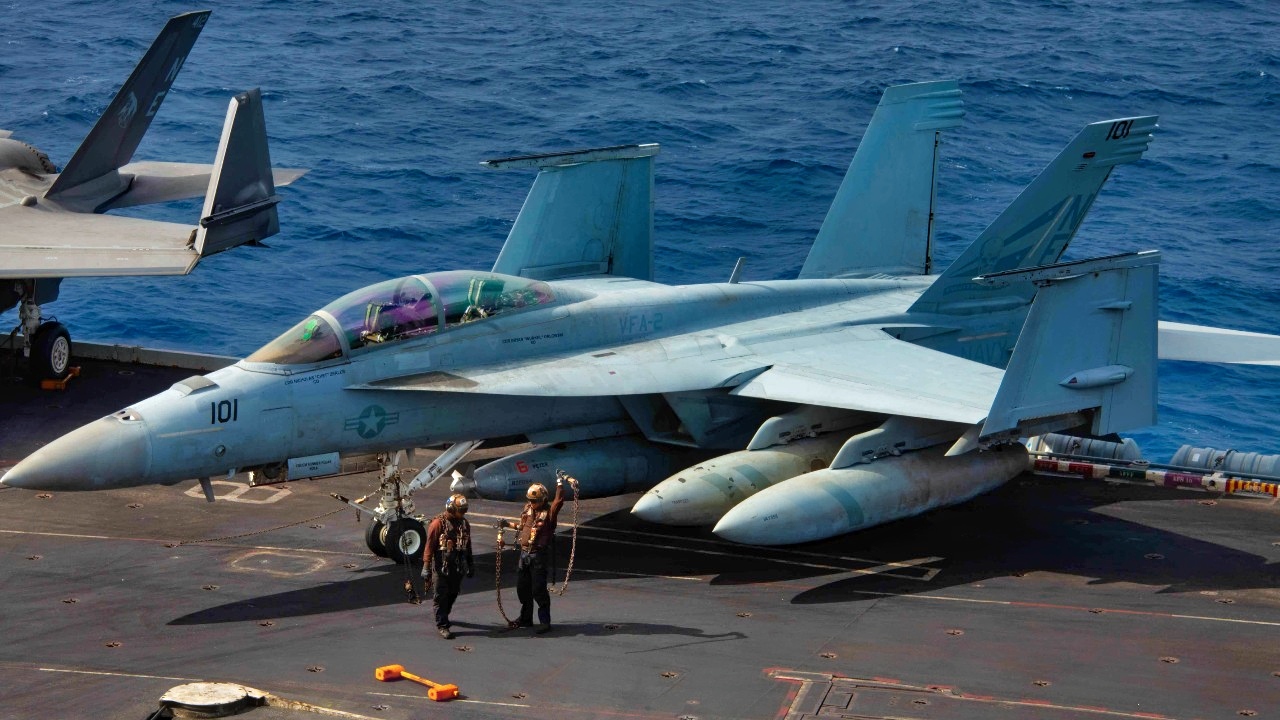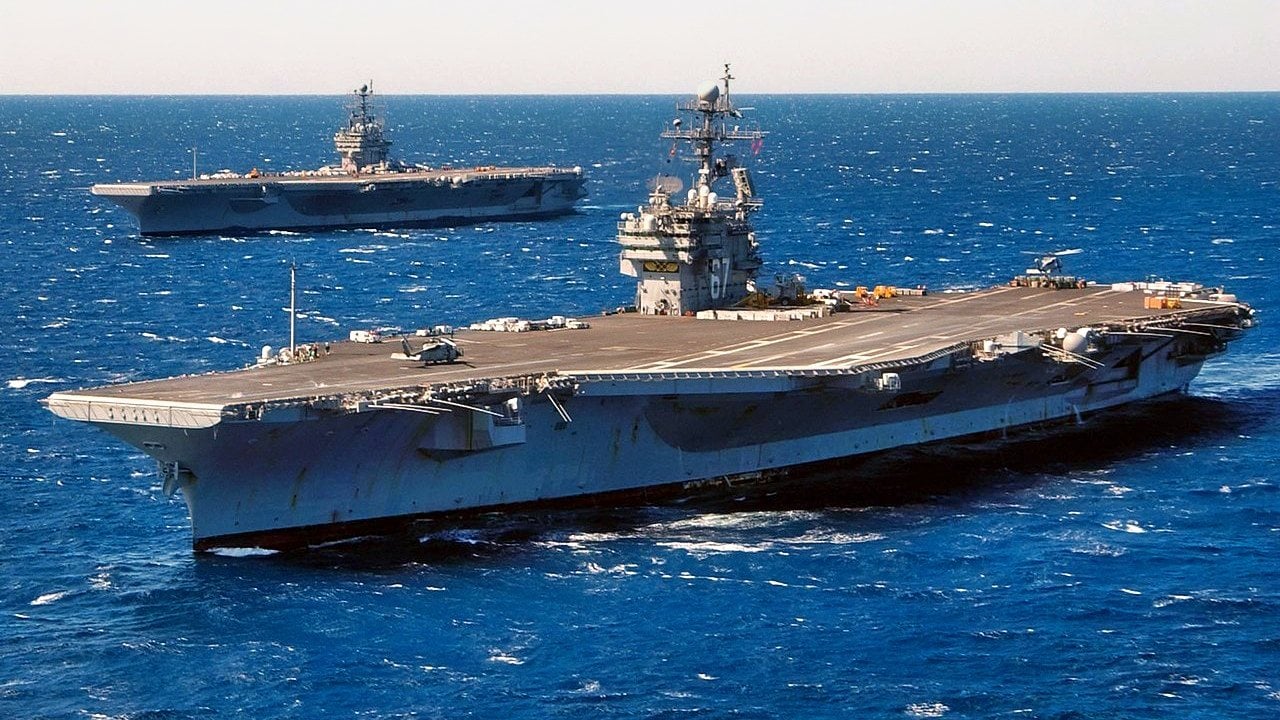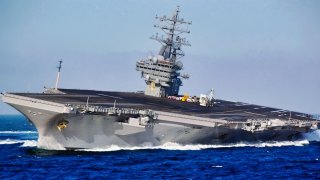Battle Stations! $4,500,000,000 Aircraft Carrier 'Sunk' By $100,000,000 Diesel Sub
Aircraft carriers are critical warships, projecting immense power and influence, but they are also vulnerable. During a 2005 U.S. Navy exercise, the Swedish diesel-powered HSMS Gotland submarine demonstrated this vulnerability by "sinking" the USS Ronald Reagan and its battlegroup multiple times.
What You Need to Know: Aircraft carriers are critical warships, projecting immense power and influence, but they are also vulnerable. During a 2005 U.S. Navy exercise, the Swedish diesel-powered HSMS Gotland submarine demonstrated this vulnerability by "sinking" the USS Ronald Reagan and its battlegroup multiple times.

-The Gotland’s near-silent Stirling engines enabled it to evade detection and penetrate the carrier’s defenses, highlighting weaknesses in anti-submarine warfare strategies.
-Costing just $100 million, the Gotland contrasted sharply with the multi-billion-dollar carrier it hypothetically defeated.
How a $100 Million Submarine “Sank” a $4.5 Billion Aircraft Carrier
As China expands its naval capabilities, such incidents emphasize the need for robust countermeasures to protect these strategic assets in modern conflicts.
Aircraft carriers are the most expensive warships out there. The most advanced carrier in the world, the USS Gerald R. Ford, has a price tag of $13 billion. Although the extreme in the spectrum, this price tag isn’t too far from the average cost of an aircraft carrier, which is anywhere from $4 to $9 billion.
The hefty cost highlights the strategic and operational importance of aircraft carriers. Flattops can project power and foreign policy like few other weapon systems worldwide. Indeed, it’s hard to find another warfighting tool that can bolster the morale of an ally or terrorize an adversary than the aircraft carrier.
Recognizing the importance of aircraft carriers, navies never send them alone to combat. Instead, every aircraft carrier goes into war, leading a carrier battlegroup. In the case of the U.S. Navy, a carrier battle group comprises guided-missile cruisers, guided-missile destroyers, submarines, and support vessels.
So, imagine if a cheap submarine somehow managed to sneak through an aircraft carrier’s defenses and sink it. Although a hypothetical scenario, it happened during a large-scale exercise when a Swedish submarine managed to “sink” an American aircraft carrier.
A Great Surprise: U.S. Navy Aircraft Carrier vs. Swedish Submarine
In 2005, the U.S. Navy held a large-scale anti-submarine warfare exercise off the West Coast. As part of the training regime, planners pitted the small Swedish HSMS Gotland against the USS Ronald Reagan aircraft carrier and its battle group. To the surprise of all, though perhaps not its crew, the HSMS Gotland was able to penetrate the anti-submarine layers protecting the carrier, including helicopters and destroyers explicitly looking for the sub, and land several simulated torpedoes “hits.” The planners concluded that the USS Roland Reagan would have sunk or suffered severe damage were the exercise real.

To make matters worse, the HSMS Gotland, a small diesel submarine, was able to replicate its feat several times over two years, causing alarm in the naval community. If a small, cheap submarine could sink a multi-billion aircraft carrier protected by several anti-submarine layers, could Chinese or Russian submarines cripple the U.S. Navy in the event of a conflict?
The Swedish submarine cost just $100 million, a tiny amount compared to the $4.5 billion the USS Ronald Reagan cost, not even including the price of the complete battle group. In addition, diesel submarines might be cheaper than nuclear-powered ones but are much nosier and can stay underwater for a smaller amount of time. However, the HSMS Gotland used Stirling engines, invented in the early 1800s, that made the submarine almost entirely silent for enemy sonars and thus invisible to even an aircraft carrier.

The Swedish submarine’s success was so profound that the U.S. Navy leased the vessel to test how to counter such threats.
As near-peer competition with China increases and as Beijing tries to assert its power in the Indo-Pacific, mainly through naval force, the lessons of the small HSMS Gotland are even more relevant.
About the Author and Expertise
Stavros Atlamazoglou is a seasoned defense journalist specializing in special operations and a Hellenic Army veteran (national service with the 575th Marine Battalion and Army HQ). He holds a BA from Johns Hopkins University and an MA from the Johns Hopkins School of Advanced International Studies (SAIS). His work has been featured in Business Insider, Sandboxx, and SOFREP.
All images are Creative Commons or Shutterstock.
From the Vault
Russia Freaked Out: Why the U.S. Navy 'Unretired' the Iowa-Class Battleships
Battleship vs. Battlecruiser: Iowa-Class vs. Russia's Kirov-Class (Who Wins?)


